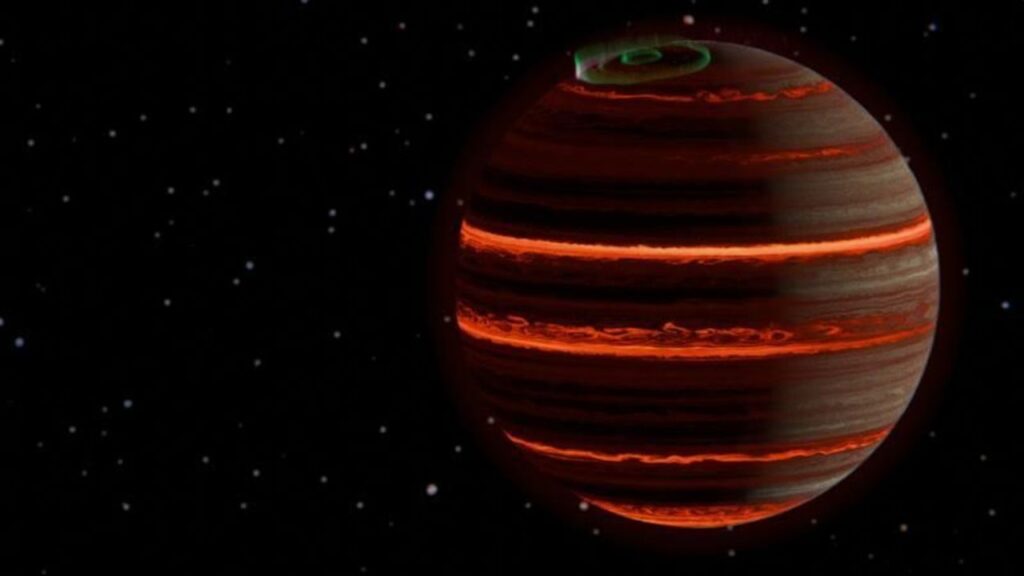
A team of astronomers has delivered the first detailed atmospheric analysis of a rogue brown dwarf, designated SIMP-0136, using data from the James Webb Space Telescope (JWST). This celestial body, located approximately 20 light-years away in the constellation Pisces, presents a unique environment characterized by intense auroras and a stormy atmosphere. The findings were published on September 26, 2023, in the journal Astronomy & Astrophysics.
Rather than orbiting a star, SIMP-0136 drifts through space on its own, rotating once every two and a half hours. Astronomers classify it as a brown dwarf, a type of object that forms similarly to stars but lacks sufficient mass for hydrogen fusion, the process that powers stars. This study marks a significant advancement in understanding the atmospheric dynamics of worlds beyond our solar system.
Significant Atmospheric Discoveries
Utilizing the JWST’s advanced instruments, scientists observed minute variations in brightness as SIMP-0136 rotated, allowing them to map its atmospheric layers. The initial hypothesis suggested that the flickering light originated from patchy clouds. However, the research revealed that the clouds, composed of sand-like grains of hot silicates, are surprisingly stable.
The study’s lead author, Evert Nasedkin from Trinity College Dublin, emphasized the importance of these measurements, stating, “These are some of the most precise measurements of the atmosphere of any extra-solar object to date.” He added that this is the first instance of directly measuring changes in atmospheric properties on a brown dwarf.
Significantly, the researchers identified a layer of gas in SIMP-0136’s atmosphere that is nearly 300 degrees Celsius (approximately 570 degrees Fahrenheit) warmer than previously predicted models. This unexpected warmth is believed to be caused by powerful auroras, generated by a magnetic field much stronger than that of Earth.
Implications for Exoplanet Studies
Auroras on Earth occur when charged particles from the solar wind interact with our planet’s magnetic field, creating beautiful displays of light. In contrast, on SIMP-0136, this effect is amplified, leading to intense atmospheric heating as charged particles collide with the atmosphere, transferring energy and elevating temperatures.
The study also noted slight temperature fluctuations of less than 5 degrees Celsius (about 40 degrees Fahrenheit) in the deeper layers of the atmosphere. Researchers suggest these variations could be linked to large storm systems, reminiscent of Jupiter’s Great Red Spot, that traverse the surface of the brown dwarf as it spins.
Brown dwarfs like SIMP-0136 serve as valuable analogs for understanding giant exoplanets that orbit distant stars. As scientists refine their techniques using JWST and anticipate future observatories such as the Extremely Large Telescope and NASA’s planned Habitable Worlds Observatory, they aim to apply these methods to explore the atmospheres of far-off worlds.
The findings from SIMP-0136 not only enhance our understanding of brown dwarfs but also pave the way for future research into the atmospheric characteristics of exoplanets. As astronomers continue to investigate these celestial phenomena, the potential to uncover the weather patterns of distant worlds becomes increasingly feasible.







